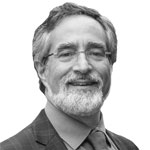Last month we celebrated the 111th anniversary of the Great Earthquake and Fire. Per tradition, city and community leaders gathered at Lotta’s Fountain on Market Street (one of the oldest monuments in the city) to remember the lives lost as a result of that tragic quake — and the ones we’ve lost since then. In fact, our last known survivor, Bill Del Monte, passed two years ago at the age of 109. Though we’ve lost the last living connection to this seminal event, I hope the fires that raged for days on end will not be forgotten, nor the lessons learned as a result.
Last year, I introduced a hearing on the operations and maintenance status of the city’s emergency water supply system — officially known as the Auxiliary Water Supply System (AWSS), consisting of a 135-mile pipeline network, a high-elevation reservoir, large-capacity tanks, pumping stations, fireboats, and underground water tanks. This ambitious project to create an independent emergency water supply for fire-fighting was started in 1913 in response to the Great Earthquake and Fire. The AWSS has tremendous benefits, including the ability to deliver water at much higher pressures and the ability to use unlimited pumped water from the bay. The system is currently used throughout the year by the San Francisco Fire Department (SFFD) to fight multiple-alarm fires — some of which you may have even witnessed in the neighborhood.
In 2010, the San Francisco Public Utilities Commission took over the ongoing functions of the system from the San Francisco Fire Department, the same year we passed our first Earthquake Safety and Emergency Response (ESER) general obligation bond. That 2010 bond provided $104.2 million to improve the overall core facilities of the AWSS, and another bond in 2014 allocated $55 million to continue that public safety effort.
Over the last century, the system has slowly been expanded from the eastern part of the city, including North Beach, Chinatown, and the Marina on westward. San Francisco voters have passed bond initiatives to expand the system, while newly developed areas of the city, like Mission Bay, have had the foresight to install AWSS.
Large swaths of the west side of the city, including the Outer Sunset and Outer Richmond, still remain unserved. Modeling of various future earthquake and fire scenarios and discussions about the geographic reach of the AWSS at subsequent hearings at the Government Audits and Oversights Committee have revealed this glaring service hole in our seismic and fire safety system. Supervisor Sandra Lee Fewer spoke at length at the last hearing about the density of wooden-framed homes that line the Richmond district and her concerns with SFFD’s ability to effectively fight the blazes that will inevitably erupt in the wake of the next big quake. Now, 111 years after the Big One, Supervisor Fewer and I are working on a plan to expand ASWW to unserved neighborhoods.
In another role, I also sit on the Seawall Resiliency Project Executive Steering Committee, designed to guide the fortification of our deteriorating seawall and prepare the shoreline for impending sea-level rise and storm surges. The San Francisco Port commissioned a study last year which revealed that in the event of a major earthquake, our aging and porous seawall could sink and crumble, which would be catastrophic for the buildings and underground utilities along the Embarcadero. As a result, voters will be asked to place a bond for seawall upgrades on the 2018 ballot, and this assumption has been included in the latest version of the city’s 10-year capital plan.
The problem is while I recognize this citywide investment is needed to protect our public resources along the Embarcadero, voters want to know public dollars are being spread equitably throughout San Francisco. Supervisor Fewer and I are proposing to allocate some of this bond to expand the AWSS to San Francisco’s poorly connected western side.
Recent projections from San Francisco Public Works staff involved with AWSS construction, repair, and design for more than 20 years put reasonable price tags on proposed extensions: $27 million for a Richmond AWSS extension and $31 million for a proposed Sunset AWSS extension seem a small price to pay to help aide San Francisco firefighters in combatting a neighborhood-wide fire disaster and saving lives. And it makes perfect policy sense to include this purpose within any new seismic safety bond that we put before voters.
Supervisor Fewer and I agree: Public safety dollars should be spread equitably throughout the entire city. From the eastside to the westside, we must prepare for the next great quake. We owe it to our constituents to put together the best possible package to put before voters in 2018.
See you in the neighborhood.





